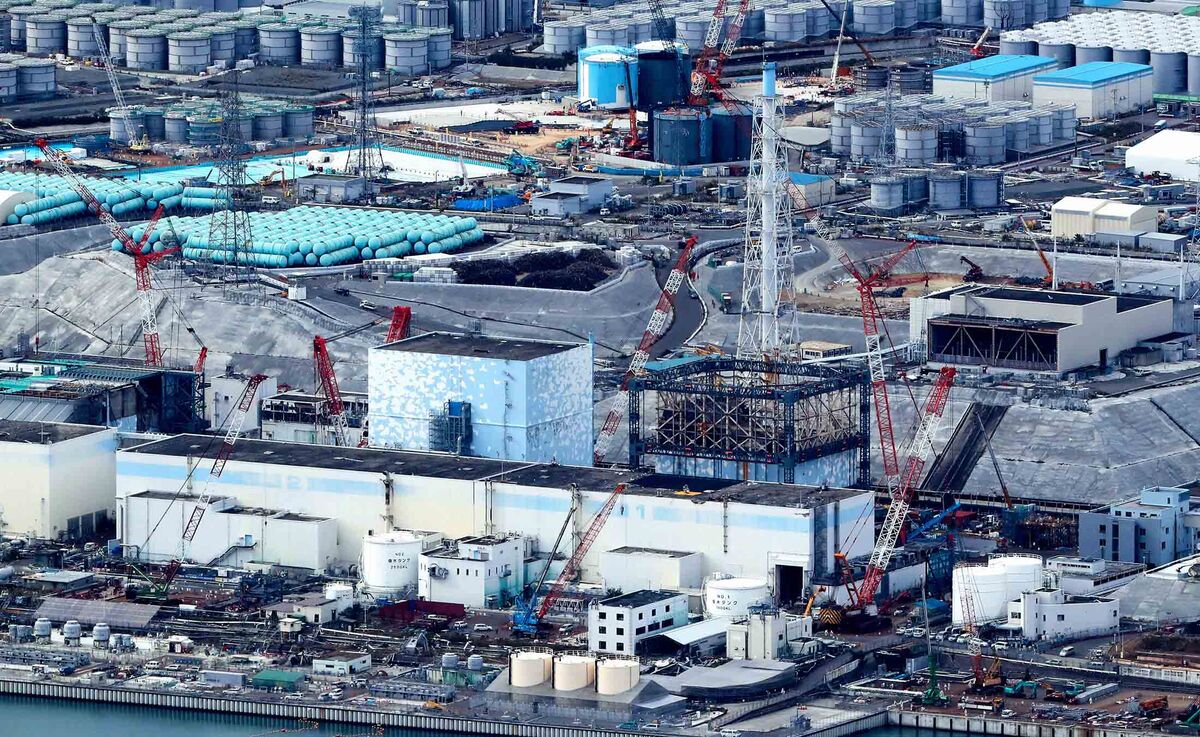
New images show what is likely to be melted nuclear fuel hanging from inside one of Japan’s wrecked Fukushima reactors, a potential milestone in the cleanup of one of the worst atomic disasters in history.
Tokyo Electric Power Co., Japan’s biggest utility, released images on Friday showing a hardened black, grey and orange substance that dripped from the bottom of the No. 3 reactor pressure vessel at Fukushima, which is likely to contain melted fuel, according to Takahiro Kimoto, an official at the company. The company sent a Toshiba-designed robot, which can swim and resembles a submarine, to explore the inside of the reactor for the first time on July 19.
“Never before have we taken such clear pictures of what could be melted fuel,” Kimoto said at a press briefing that began at 9 p. Friday in Tokyo, noting that it would take time to analyze and confirm whether it is actually fuel. “We believe that the fuel melted and mixed with the metal directly underneath it. And it is highly likely that we have filmed that on Friday.”
If confirmed, the substance -- which has the appearance of icicles -- would be the first discovery of the fuel that melted during the triple reactor accident at Fukushima six years ago. For Tokyo Electric, which bears most of the clean-up costs, the discovery would help the utility design a way to remove the highly-radioactive material.
The robot, which is about 30 centimeters (12 inches) long, will search for melted fuel at the bottom of the reactor on Saturday. It is possible that the company will take more pictures of what could be melted fuel spread across the floor and lower levels, according to Tokyo Electric’s Kimoto. Fuel from a nuclear meltdown is known as corium, which is a mixture of the atomic fuel rods and other structural materials.
Early Signs
“It is important to know the exact locations and the physical, chemical, radiological forms of the corium to develop the necessary engineering defueling plans for the safe removal of the radioactive materials,” said Lake Barrett, a former official at the U. Nuclear Regulatory Commission who was involved with the cleanup at the Three Mile Island nuclear power plant in the U. “The recent investigation results are significant early signs of progress on the long road ahead.”
Because of the high radioactivity levels inside the reactor, only specially designed robots can probe the unit. And the unprecedented nature of the Fukushima disaster means that Tepco, as the utility is known, is pinning its efforts on technology not yet invented to get the melted fuel out of the reactors.
Removal Plans
The company aims to decide on the procedure to remove the melted fuel from each unit as soon as this summer. And it will confirm the procedure for the first reactor during the fiscal year ending March 2019, with fuel removal slated to begin in 2021.
Decommissioning the reactors will cost 8 trillion yen ($72 billion), according to an estimate in December from the Ministry of Economy, Trade and Industry. Removing the fuel is one of the most important steps in a cleanup that may take as long as 40 years.
Similar to the latest findings on Friday, Tepco took photographs in January of what appeared to be black residue covering a grate under the Fukushima Dai-Ichi No. 2 reactor, which was speculated to have been melted fuel. However, a follow-up survey by another Toshiba-designed robot in February failed to confirm the location of any melted fuel in the reactor after it got stuck in debris.
A robot designed by Hitachi-GE Nuclear Energy Ltd. also failed to find any melted fuel during its probe of the No. 1 reactor in March.
The significance of Friday’s finding “might be evidence that the robots used by Tepco can now deal with the higher radiation levels, at least for periods of time that allow them to search parts of the reactor that are more likely to contain fuel debris,” M. Ramana, professor at the Liu Institute for Global Issues at the University of British Columbia, said by email.
“If some of these fragments can be brought out of the reactor and studied, it would allow nuclear engineers and scientists to better model what happened during the accident.


0 comments:
Post a Comment